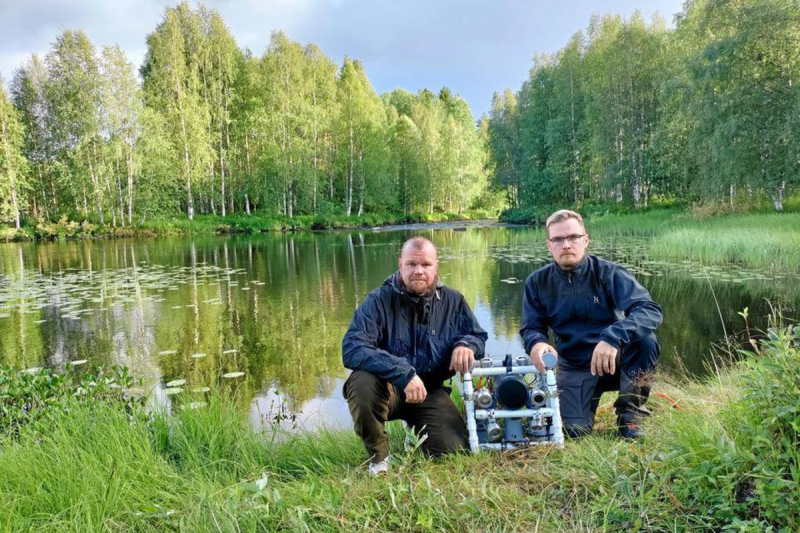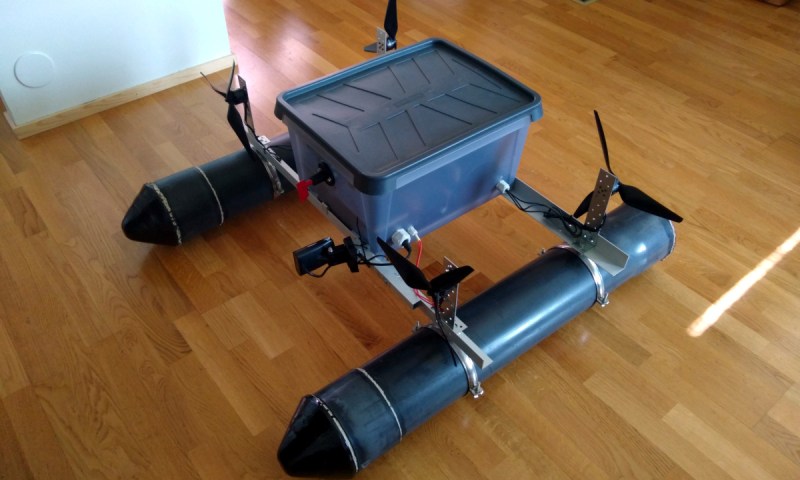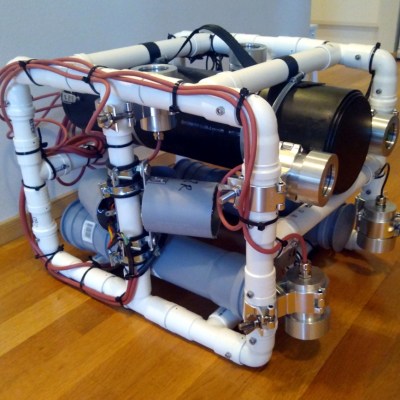People go missing without a trace far more commonly than any of us would like to think about. Of course the authorities will conduct a search, but even assuming they have the equipment and personnel necessary, the odds are often stacked against them. A few weeks go by, then months, and eventually there’s yet another “cold case” on the books and a family is left desperate for closure.
But occasionally a small team or an individual, if determined enough, can solve such a case even when the authorities have failed. Some of these people, such as [Antti Suanto] and his brother, have even managed to close the books on multiple missing person cases. In an incredibly engrossing series of blog posts, [Antti] describes how he hacked together a pair of remotely operated vehicles to help search for and ultimately identify sunken cars.
The first craft built was intended to perform reconnaissance using a consumer side-scan sonar unit. While these devices are designed to be mounted to a “real” boat, [Antti] didn’t have the room at home for one. So he did some research and eventually settled on an affordable solution that combined a watertight plastic box with pontoons made out of PVC pipes. We’ve seen similar designs before, and have always been impressed with the stability and payload capacity offered by such an arrangement given its low cost and ease of assembly.
In an interesting twist [Antti] decided to outfit his craft with quadcopter motors and propellers to create a sort of airboat, which would keep it from getting tangled up in weeds. We also appreciate the no-nonsense method of viewing the sonar’s output remotely — all they had to do was take an old smartphone, point its camera at the unit, and open up a video calling application.
While having the sonar data would help the brothers identify potential targets on the bottom, it wasn’t enough to make a positive identification. For that, they’d have to go down there and directly image the object being investigated. So the second project was a remotely operated vehicle (ROV).
Its PVC frame might look a bit low-tech, but [Antiii] designed the central “dry hull” to survive at depths of up to 100 meters (328 feet). With cameras, lights, a Raspberry Pi, and an Arduino Mega pulling it all together, the finished product is a formidable underwater explorer.
Combined with diligent research on the individuals who went missing and the areas in which they were last seen, the brothers were able to use these vehicles to solve a pair of missing persons cases that had been open for more than a decade. Their work earned them the personal thanks of the President of Finland, and a medal that’s generally only given to police officers.
Our hats off to this intrepid duo — surely there’s no more noble a pursuit than dedicating your skills and free time to help others.

















The level of dedication and focus with these guys is insane. If you’re wondering whether or not to read the article, go for it. It’ll be one of the better reads of the year.
Agreed! This is the most gonzo stories I’ve read in a while.
If you’re looking for another good read for Sunday, follow the link to the “Death Valley Germans” right at the beginning of the ROV story.
Fantastic write-up on the search activities that lead to the discovery of theremains of a German family that lost their lives to the elements (and poor planning) in the death valley back county.
Another thumbs up!
How many emergency services use an underwater ROV? Yeah, we hear land using drones a lot because they’re easily available.
If they have access to one they will use it if needed. Around here this usually involves contracting with an ROV operator which provides the pilot and ROV. Although I am sure I’ve read an article about some fire department or SAR group getting their own ROV.
I read the article, what a determination, applause !
It can be disheartening for a family when searches are called off due to time/weather/finances.. It’s guys like these that pick up and carry on to help families find closure. They are to be commended and funded.
these guys are awesome. made a similar ROV around 2005 as a graduate capstone project. Im so glad to see citizen investigation applying this kind of high-low tech to solve cold cases. The official services have to purchase very expensive professional equipment, which usually limits them to 1 (or none), and they can’t justify the time, manpower and expense for searching every lake and river, every time someone goes missing. Volunteers with low cost, home made equipment doing it as a hobby can do anything.
That was an incredible read.
This guys realy do cool things. GJ
This really is a great story, and as someone wrote earlier, the tale of the missing Germans is equally fascinating to read.